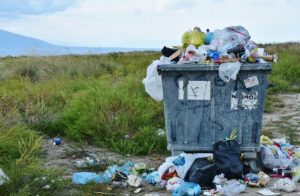How to Improve Plastic Recycling
Plastic recycling has been around for decades now, but still, only 9% of plastic has been recycled. Why is this? Most countries don’t have the infrastructure to efficiently and effectively recycle.
When plastics are left in landfills, it’s likely they will sit indefinitely and remain open in the element. When this happens, the plastics may be picked up by the wind or other animals, and make their way into the ocean.
If they are lucky enough to end up in incinerators, it takes a significant amount of gas and other energy to break them down. In the process, the incinerator releases new harmful chemicals into the atmosphere that put our ozone at risk.

We need to reduce harmful plastics in the environment
The way the world is consuming and recycling harmful plastics needs to be disrupted immediately. Harmful plastics are dominating our oceans and marine life.
As of 2022, if plastic production isn’t disrupted by 2050:
- 99% of all seabirds will have ingested plastic. This is a problem because juvenile seabirds are significantly less likely to live after ingesting plastic.
- Our seas and oceans will have more plastic than fish.
- 50% of the entire world’s oil consumption will be dedicated to manufacturing plastics.
Why are we moving backwards despite our effort to recycle? There are seven types of recycling codes for plastics, but most American facilities can only recycle two. The rest used to get sold to China, that is, before China banned the import of foreign plastic. Now, unfortunately, most end up in landfills or incinerators.
Until SQ3D. SQ3D is here to disrupt the way America recycles plastic.
How SQ3D is Improving the Environment
Fact: properly reusing, recycling, and rethinking plastics improves the environment.
SQ3D is taking on the mission of reusing and rethinking how we recycle plastic. We are actively taking plastic and converting it into filament or our printers to use. Our filament is used by us or other 3D printers to create environmentally friendly products.
We take plastics out of the environment and repurpose for safe consumption in our homes. For example, plastic bottles that would be sitting in landfills are converted into safe PETE based trims placed on doorways, windows, and moldings.


